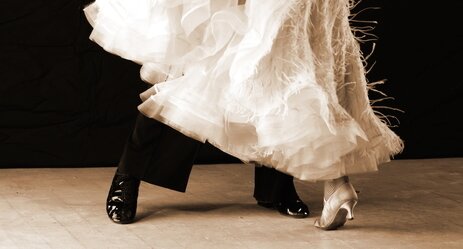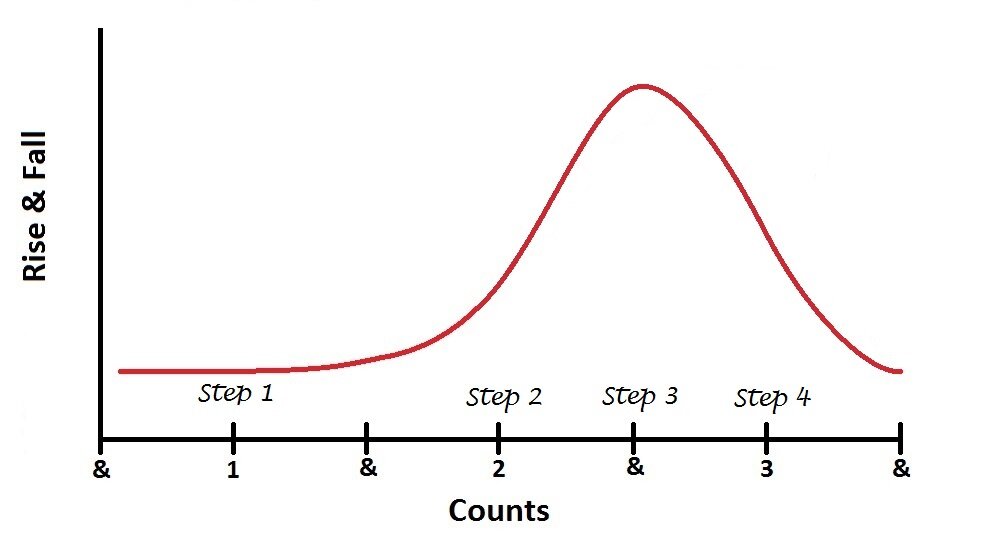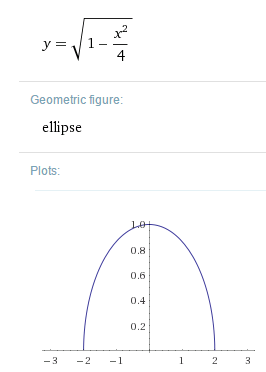Rise & Fall in Waltz: Part 2 
16 May 2016
Way back in March, BGBB released Rise & Fall in Waltz: Part 1, the Rise and Fall of the Natural and Reverse Turns were discussed. If you haven't gotten a chance to read it, check it out before reading this article. Whereas that article discussed figures where the feet end closed, this article will focus on Chasses, which end with feet apart. We will examine in great detail the Rise and Fall of this type of movement, one of the most fundamental movements in Waltz.
The Traditional Technique
All Chasses ended with feet apart, such as the Chasse from Promenade Position or the Progressive Chasse to the Right, have the following Rise and Fall:
Commence to Rise at the end of 1
Continue to Rise on 2 and 3
Up on 4, Lower at the end of 4
Remember, this type of Rise and Fall is only used in Chasses with feet ended apart. Other figures with feet ended apart, such as the Whisk or the Telemark, have different Rise and Fall.
In Depth Explanation
Let's look specifically at the Rise and Fall for steps 1-4 of a Chasse from Promenade Position for the Man, because his steps are simpler in that he has no turn or change of direction. The Lady's Rise and Fall are the same. Remember, this is the same Rise and Fall used in every Waltz Chasse. Below is an in depth explanation of the Rise and Fall for each half beat of music, even going so far as to the quarter beat between the last two steps of the Chasse. Key elements have been excluded, such as Turn, and this explanation focuses only on Rise and Fall.
Commence with weight on the LF, with RF free, at the lowest part of your Rise and Fall, having danced a Whisk or any figure ended in Promenade Position.
| 1 | With weight on the ball of the LF and commencing to release the left heel, commence to send the body weight and RF forward and across in PP and CBMP with the ball of the foot in contact with the floor, extending the left leg and then step Heel to Toe, with weight firmly split between the two feet, and strong pressure into the ball of the back foot. |
| & | Flex the R knee strongly to bring the body over the RF, rolling through the Toe of the back foot, and commencing to rise very slightly as the body arrives over the foot. |
| 2 | Swing through the RF, straightening the right knee and continuing the rise smoothly. Place the LF to the side and slightly forward high on the Toe, with weight split evenly between the two feet. |
| & | Close RF to LF, reserving a slight portion of your foot and leg Rise. |
| a | Use that small amount of reserved Rise to push up and over into the next step. |
| 3 | Land with the LF to the side and slightly forward high on the Toe (i.e. as high on the ball of the foot as possible), with weight split evenly between the two feet. |
| & | Lower on the LF gradually as the RF closes to the LF with the Ball of the RF in contact with the ground. |
A Note about Step 3 and 4
A slight amount of Rise is reserved between step 3 and 4. This is that last bit of stretch that you would usually give to the Natural Turn or any figure that ends with feet closed. Here, it is used to give a lilt to the step, so that step 4 is felt as going up and over, like a helicopter landing, and not diving straight into the ground, like plane crashing.
What it Should Look Like
This graph shows where you should be in your Rise and Fall at any point in the Chasse. Notice that even though step 4 is listed as Up, it is lower than step 3. Read on below to see why that is.

Commence to Rise at the end of 1
One of the most common faults in beginners is that they lower on step 1, but in the graph above, it should be clear that you should neither rise nor fall on step 1, and it is only at the end of 1 that you even commence to rise. This is because the extension of your leg should be powering you to move forward, not up or down. At the end of the first step, when your weight has gotten over your front foot, you just begin to experience rise.
Continue to Rise on 2 and 3
 By the time you reach step 2, your legs should be fairly straight. What causes you to rise between steps 2 and 3 is the closing of the feet - that's it. Think of it like this: your legs and the floor form a triangle. When you close your legs and stand with feet together, your triangle is very skinny and very tall. If you can do the splits, then your triangle is very wide and very short. As you go from one extreme to the other, Rise occurs. In Waltz, we thankfully don't have to do the splits, but we do Rise in the same way just by virtue of closing our legs. The exact amount of Rise (for all you math and physics buffs out there) is represented by the equation to the right. For the rest of us less math-savvy dancers, this means that the Rise generated by closing our legs is a smooth rise with the appearance of a plateau on top for a split second, which is exactly what we want in Waltz.
By the time you reach step 2, your legs should be fairly straight. What causes you to rise between steps 2 and 3 is the closing of the feet - that's it. Think of it like this: your legs and the floor form a triangle. When you close your legs and stand with feet together, your triangle is very skinny and very tall. If you can do the splits, then your triangle is very wide and very short. As you go from one extreme to the other, Rise occurs. In Waltz, we thankfully don't have to do the splits, but we do Rise in the same way just by virtue of closing our legs. The exact amount of Rise (for all you math and physics buffs out there) is represented by the equation to the right. For the rest of us less math-savvy dancers, this means that the Rise generated by closing our legs is a smooth rise with the appearance of a plateau on top for a split second, which is exactly what we want in Waltz.
If you compare the red graph above to the graph found in the post about the Rise and Fall of the Natural Turn, you will see that this one is pointier, but both are said to be based on the same mathematical equation. The reason for this is because steps 2 and 3 are separated in the Chasse by only 1/2 of a beat, while in the Natural Turn they are separated by a full beat, allowing the Rise to occur more gradually.
Up on 4
This is the weird part. The Rise here is stated as Up, but looking at the graph, it is lower than the previous step. The reason for this is because you should be trying to stretch upward at this point with every fibre of your being: the ankles, the knees, the body, and the eyebrows should all be stretched up to the maximum here (okay not the eyebrows), but nevertheless, because your feet are apart, your shoulders are physically closer to the ground than when your feet were together. The reason this isn't expressed as commence to lower or something is that you shouldn't be trying to lower at all. If you were to try to lower on this step, you would plough into the ground. This is a common problem for beginners, who take the fourth step of the Chasse as a HT step instead of a TH step. The reason for this is that they have already lowered, so a HT step seems natural.
The Up you feel during this step should feel more like forward and diagonally upward, as if you are neck deep in a swimming pool, stepping over a large trench that you can barely reach the other edge of without submerging your chin.
Lower at the end of 4
This means that as your feet close, your knees should bend. When you landed on step 3, you were on the balls of both feet with both knees straight. Now, as the feet come together, the knees bend. A common error is ending with a bent front knee while the back foot is left behind the body. By collecting your feet as you lower, you will have a smoother movement.